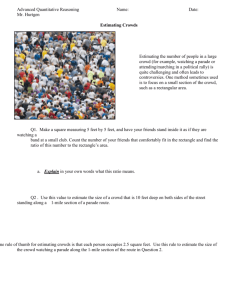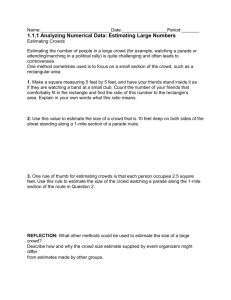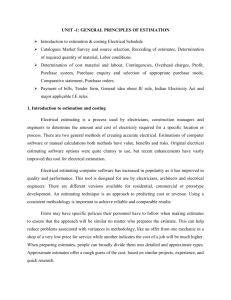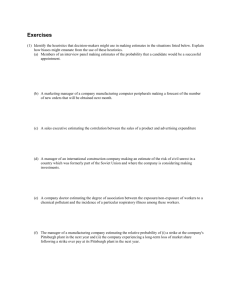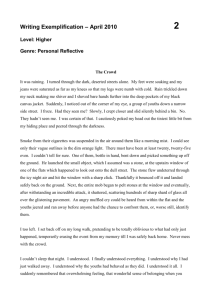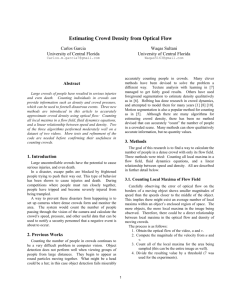SAS I.A.1: Estimating Crowds
advertisement
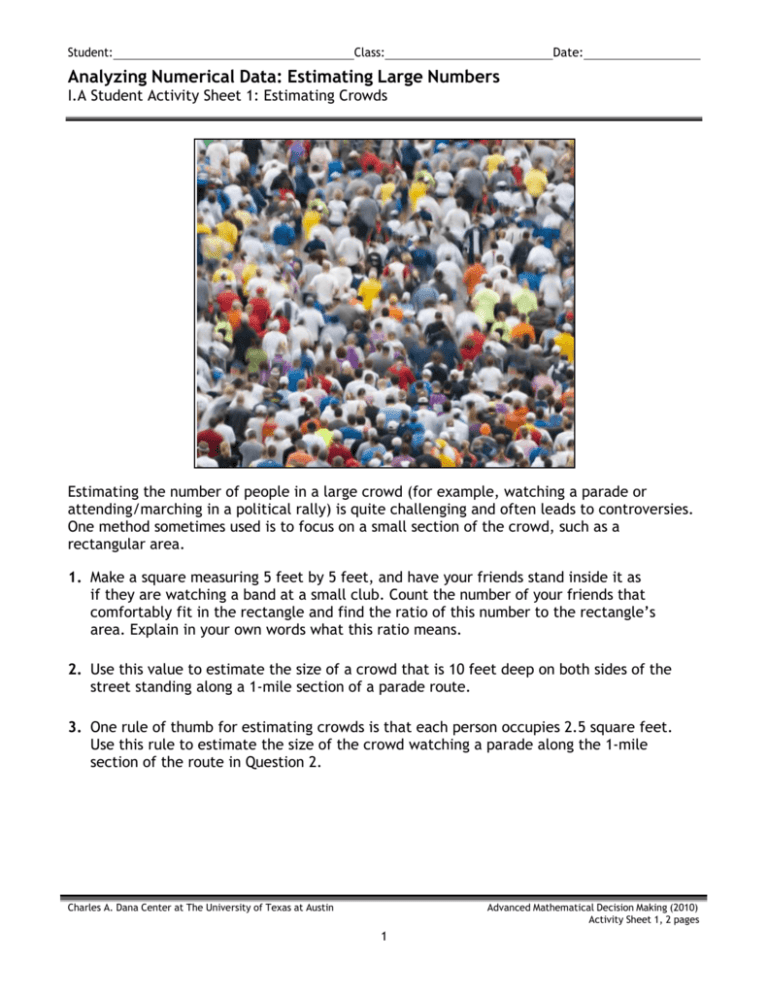
Student: Class: Date: Analyzing Numerical Data: Estimating Large Numbers I.A Student Activity Sheet 1: Estimating Crowds Estimating the number of people in a large crowd (for example, watching a parade or attending/marching in a political rally) is quite challenging and often leads to controversies. One method sometimes used is to focus on a small section of the crowd, such as a rectangular area. 1. Make a square measuring 5 feet by 5 feet, and have your friends stand inside it as if they are watching a band at a small club. Count the number of your friends that comfortably fit in the rectangle and find the ratio of this number to the rectangle’s area. Explain in your own words what this ratio means. 2. Use this value to estimate the size of a crowd that is 10 feet deep on both sides of the street standing along a 1-mile section of a parade route. 3. One rule of thumb for estimating crowds is that each person occupies 2.5 square feet. Use this rule to estimate the size of the crowd watching a parade along the 1-mile section of the route in Question 2. Charles A. Dana Center at The University of Texas at Austin Advanced Mathematical Decision Making (2010) Activity Sheet 1, 2 pages 1 Student: Class: Date: Analyzing Numerical Data: Estimating Large Numbers I.A Student Activity Sheet 1: Estimating Crowds 4. EXTENSION: Additionally, a method of estimating the number of people participating in a march is to assign someone to a spot on the sidewalk with the job of counting the number of marchers who pass in 1 minute. Then multiply this number by the minutes it takes for all marchers to pass that spot. Use this method to estimate the students who attend your school (or a certain building on your campus) on a given morning. Count the number of students entering the building in 1 minute and multiply this number by the minutes it takes the entire group to enter. 5. REFLECTION: What other methods could be used to estimate the size of a large crowd? Describe how and why the crowd size estimate supplied by event organizers might differ from estimates made by other groups. Charles A. Dana Center at The University of Texas at Austin Advanced Mathematical Decision Making (2010) Activity Sheet 1, 2 pages 2
